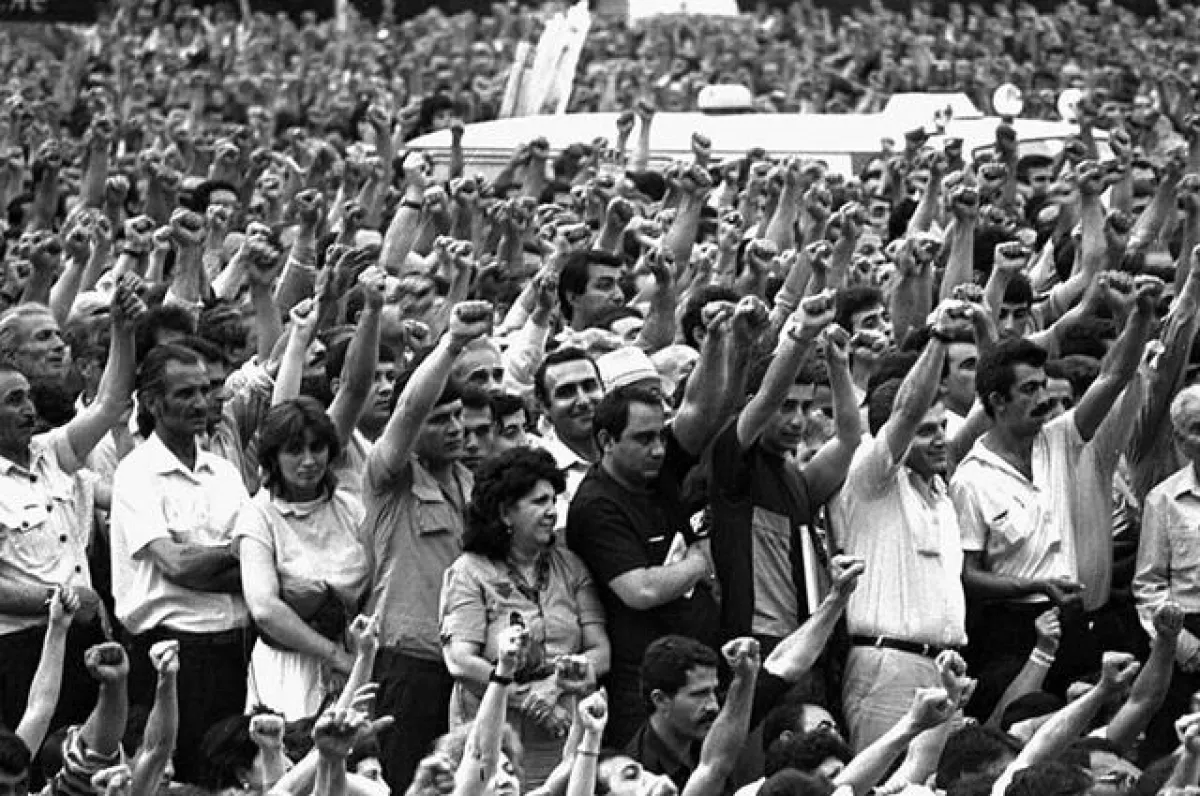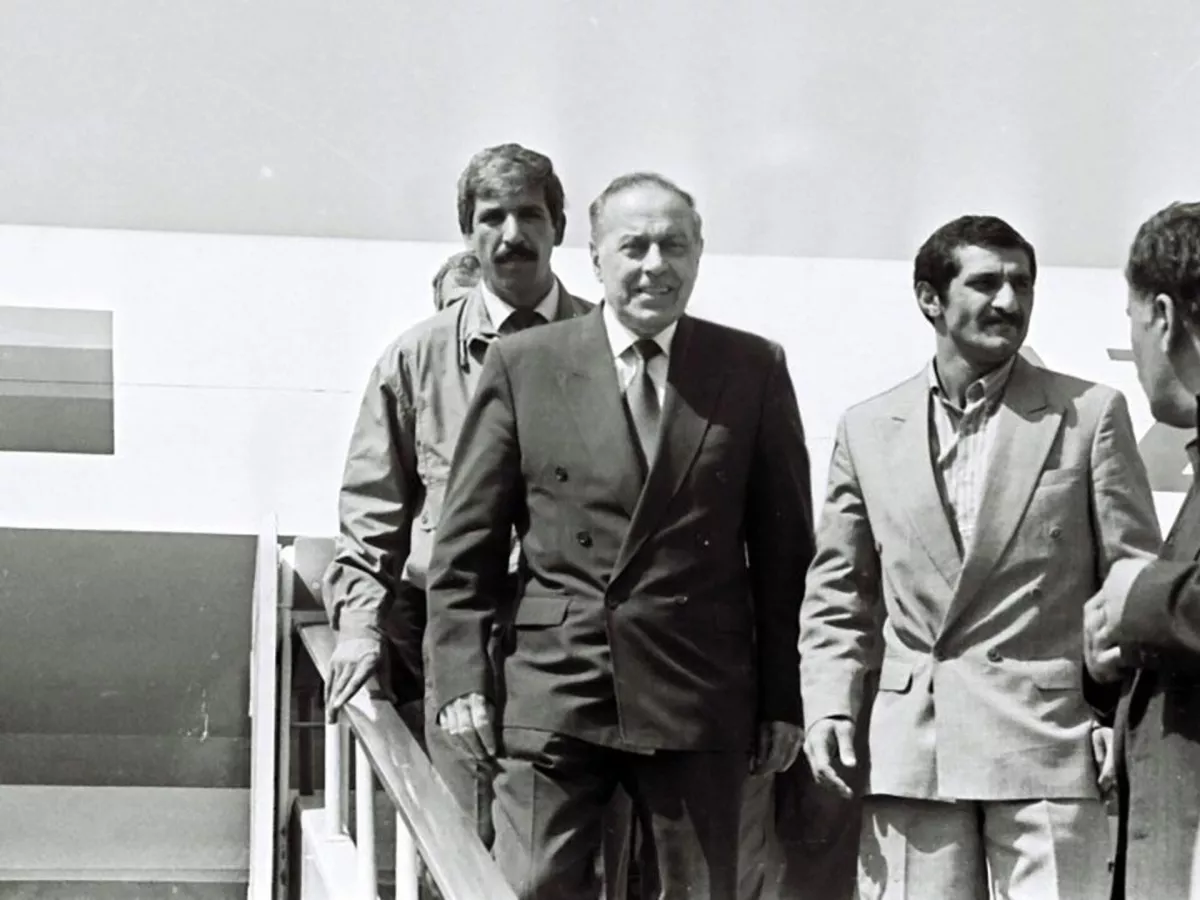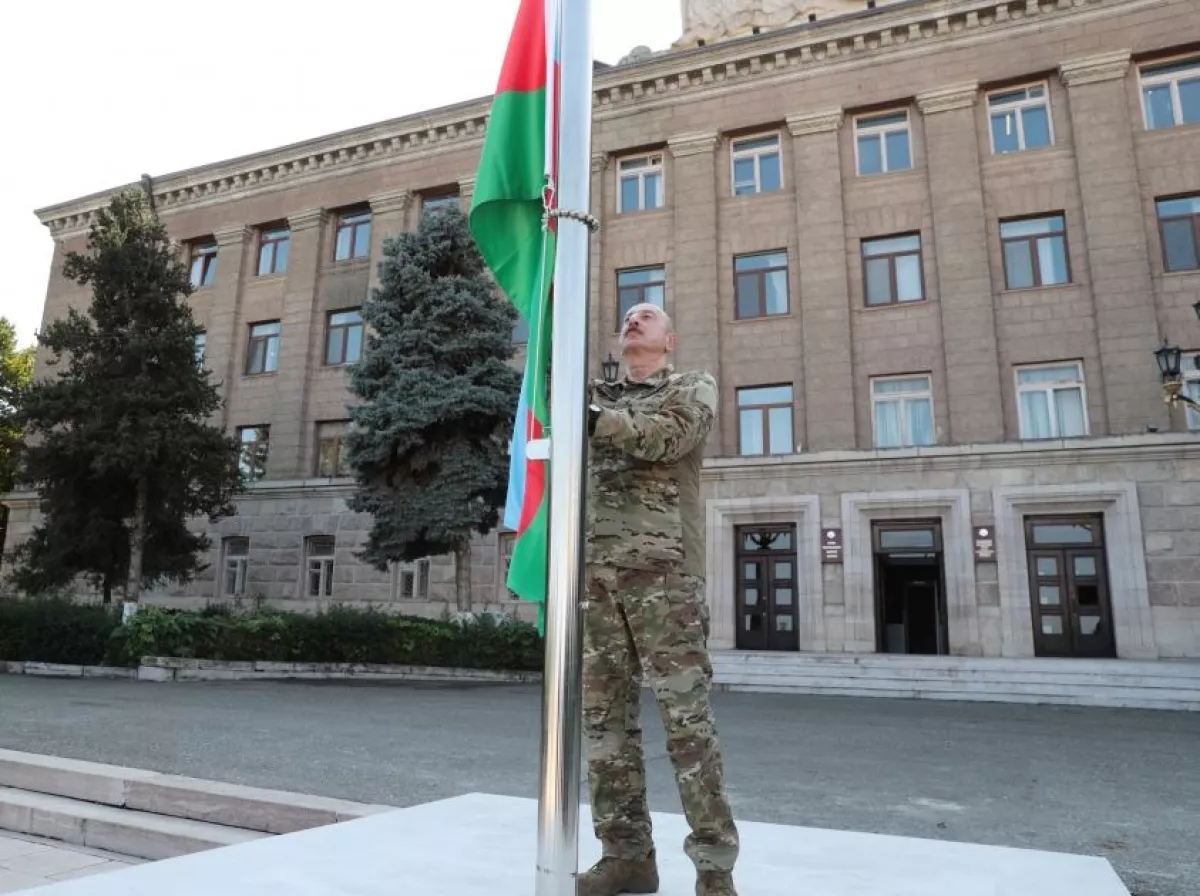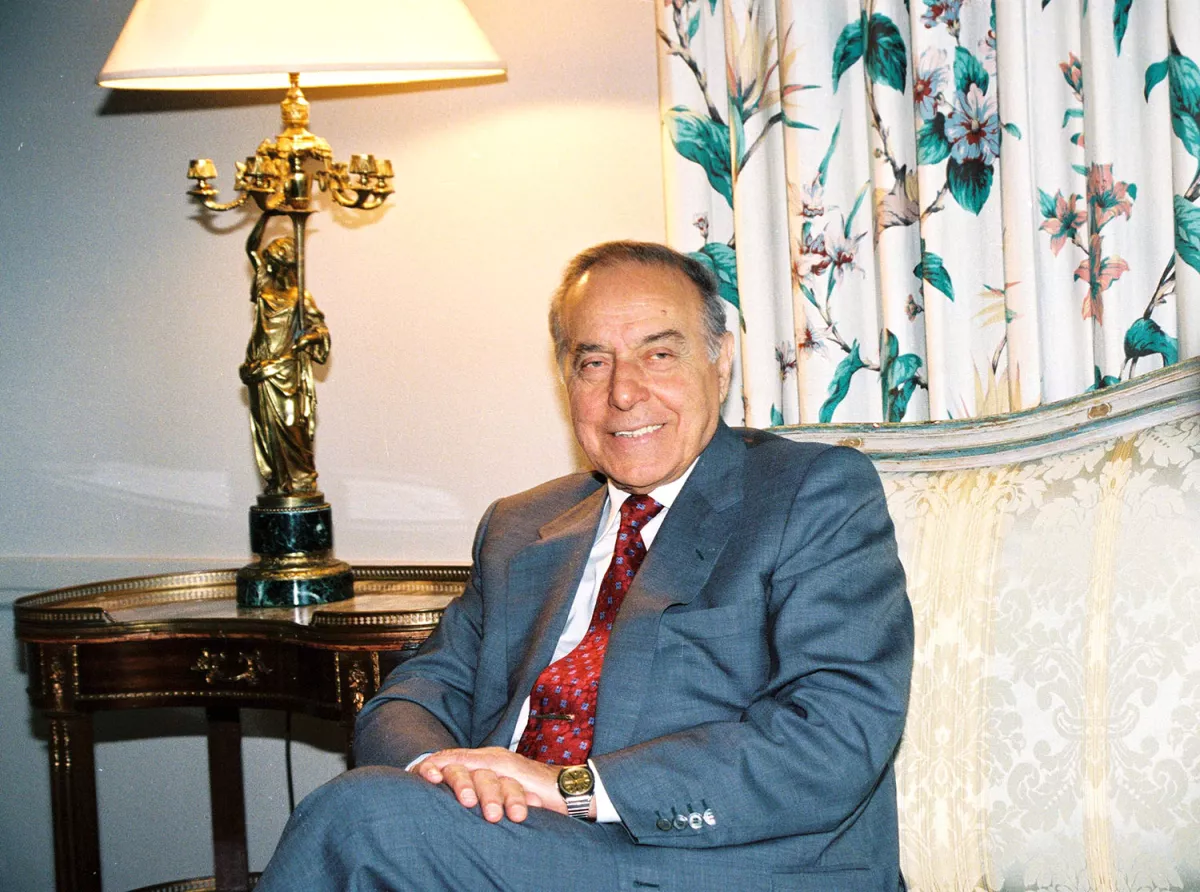Unveiling mystery of Key West talks, or Heydar Aliyev's masterclass A historical excursion on Caliber.Az
The Azerbaijani people, ethnically formed as a result of historical processes at the crossroads of both continuous habitation and migration waves from a variety of different nations, can truly be proud of their glorious centuries-old history! Various Oghuz (and essentially Azerbaijani) dynasties, one after another, ruled vast empires for many centuries—almost a millennium! Although the names of these empires were derived from the ruling sub-ethnic group rather than the territory itself, they collectively represent separate chapters in the unified, consolidated history of the Azerbaijani people! Throughout all these centuries, our people lived on their land and within their native state.
Until the 19th century arrived—the century that entered Azerbaijani history with the sorrowful name "The Separator."
The Russo-Qajar wars, which ended with the Gulistan and then the Turkmenchay treaties, split Azerbaijan into two parts. The northern part became part of the Russian Empire, effectively turning into its colony, while the south remained within the Qajar Shah's domain. A century later, following a coup, it found itself suddenly within a completely new state called "Iran," which pursued a course of gradually erasing all Azerbaijani influences from its centuries-old past and artificially strengthening the Persian elements that had long remained in the shadows.
However, the tragedies of the 20th century in our history did not end there. The short-lived first democratic republic in the entire Islamic East was interrupted by renewed aggression from the north and more than 70 years of Soviet occupation. This period not only saw the destruction of our national elite and intelligentsia in the 1920s and 1930s, the plundering of national resources, and an imbalanced contribution to the development of our homeland, but also the further dismemberment of the territory of the lost independent republic. It also saw the creation of an autonomous region for Armenians, which had never existed before in the heart of Sovietized Azerbaijan, without any justification and, most importantly, without the creation of a parallel autonomous region for the indigenous Azerbaijanis in that part of our homeland that, as a result of the resettlement of ethnic Armenians, was now transformed into "Armenia."
Thus, by the time Azerbaijan regained its independence in 1991, the map of the Third Republic had become utterly dismal and no longer reflected the compact settlement area of our people. Today, there is no place on earth where one could find a case comparable to Nakhchivan, which became—attention!—the only enclave in the world, not only separated from the main part of the state but also lacking any access to neutral international waters! There is no second such example on the map of the world! And this tragic uniqueness, if one can put it that way, is a direct consequence of the crime committed by the Bolsheviks, who, alongside other regions, despite their indisputably Azerbaijani demographic majority, extracted Western Zangezur from the Azerbaijan Democratic Republic and transferred it, along with other areas, to Armenia. And all this was done, not "by accident," but politically and intentionally—to divide the Turkic world and place a geographical barrier in its way.
The troubles did not end there. In the late 1980s, yet another time bomb, planted by the same Bolsheviks at the dawn of Soviet power, went off—namely, the very autonomy in Karabakh.

The tragedies that befell our people during the collapse of the Soviet empire and in the early 1990s need not be repeated here. However, this long historical introduction was necessary in order to approach the main topic of today’s issue with a complete understanding of the tragic processes that led to the starting point of our subject and what preceded it.
And the topic, as you may have already guessed, is related to Zangezur—the very political rift that was artificially, absurdly, and, let’s be honest, criminally drawn through our historical territory.
So, in the summer of 1993, in response to the call of the Azerbaijani people, the helm of the state was once again in the hands of the experienced politician Heydar Aliyev.

And just 10 months later, in May 1994, Baku and Yerevan managed to reach a ceasefire. By that time, the situation of the independent Republic of Azerbaijan was as dire as it could be. Armenia, which had received an additional 20,000 square kilometers from the Soviet authorities at the expense of the Azerbaijan Democratic Republic’s territory—essentially nearly tripling its size at our expense—had also occupied another 20% of what the Soviets had left to us after their departure from the historical stage. The leadership of Azerbaijan was faced with the task of liberating both Karabakh and the surrounding regions, as well as resolving the problem of unblocking Nakhchivan, which had been criminally separated from us. These two tasks had always been paramount in the political doctrine of the independent Azerbaijani state and never left the long-term agenda.
Today, from the vantage point of the years lived and the goals achieved, we can begin to gradually reveal all that was continuously on the mind of Azerbaijan’s top leadership. However, due to the ongoing occupation and the nature of the negotiation process within various formats, this was not openly expressed at the time. Today, we can start to talk about it. The fact is that, despite the discussions of various, sometimes extravagant plans to resolve the conflict, not a single leader of independent Azerbaijan ever considered the alienation of even a single inch of Karabakh land. Meanwhile, the restoration of land connectivity with Nakhchivan has been, is, and will remain a strategic goal until it is achieved.

The U.S. State Department declassified a number of documents revealing details of the behind-the-scenes negotiations surrounding the so-called "Goble Plan." We will not delve into the specifics of this plan at the moment, but it’s worth noting that it proposed a territorial exchange: the territory of the former Nagorno-Karabakh Autonomous Oblast (NKAO) and the Lachin corridor in exchange for the Meghri district of the Republic of Armenia. It is important to highlight that while the proposal was called the "Goble Plan," its author was not an American. It was first introduced by the Turkish side, which understood the existential significance of the Zangezur Corridor, and Heydar Aliyev at that time agreed to discuss it.
And here, we make an important observation. It is critically important to note the following: to propose an idea or agree to discuss it does not mean being ready to accept it and sign it. Let us emphasize once again, and make it clear to everyone: the leadership of Azerbaijan never for a moment considered giving up any part of its homeland to remove the injustice imposed by the Bolsheviks. Justice had to be restored without paying the price of what was already ours. Discussing a territorial exchange or even verbally agreeing to it at some point did not mean readiness to sign the document. It is extremely important to remember this!

Today, with the Azerbaijani flag irreversibly flying over Khankendi and Shusha, some of the secrets of those years can now be revealed. Heydar Aliyev, in a close circle, admitted that, while never considering giving up Karabakh, he, as a seasoned intelligence officer, and seeing his counterpart as a provincial boy, feigned his agreement to the "territorial exchange" in order to determine for himself how important the border with Iran was for the Armenian leadership and whether there was anything they would be willing to trade this strip of land for.
It is well-known that Robert Kocharyan, despite his denials today, was initially ready to accept the proposed plan and even managed to temporarily convince Vazgen Sargsyan, who was later executed. The plan was opposed by Karen Demirchyan, who, apparently, maintained ties with Moscow and secretly consulted there. Demirchyan was able to cool the enthusiasm of Vazgen Sargsyan, and the two of them expressed their shared disagreement to Kocharyan. From that moment on, Kocharyan himself began to waver, attempting to secure a bit more than what was originally outlined in the plan.
Declassified documents reveal a highly significant fact. In late January 2000, during a personal meeting with Heydar Aliyev at the World Economic Forum in Davos, the President of Armenia made a new request to all parties involved, which President Aliyev later shared with the U.S. Ambassador to Azerbaijan, Stanley Escudero, in Baku a few days later. As it turns out, in Davos, Kocharyan offered Heydar Aliyev the transfer of Meghri to Azerbaijan, thus agreeing to lose the border with Iran, as initially "agreed" (in quotation marks) in Sadarak, if... attention! — Türkiye agreed to discuss the so-called "Armenian genocide" with Yerevan.
In response to Kocharyan's proposal in Davos, Heydar Aliyev stated that the issue of the "genocide" had never been part of the Armenian-Azerbaijani agenda, and he would not raise this issue with Ankara. However, later in Baku, Aliyev told Ambassador Escudero that from this interaction, he drew an important conclusion: the Armenian side did not consider the border with Iran to be as vitally important as it had previously seemed. "If Kocharyan is willing to give it up in exchange for recognition of the genocide, then Meghri is not a principled issue, but a bargaining chip!" Aliyev told Escudero.
This was exactly what Heydar Aliyev wanted to find out! It was his personal triumph. The task had been accomplished. The process could begin to wind down.

Meghri for the Armenians is not a "sacred sanctuary," but a bargaining chip! This episode is the most crucial, you could say the very core, of all the published documents.
Key West became the stage for the masterclass delivered by the experienced politician Heydar Aliyev to Robert Kocharyan. It was a masterclass that Kocharyan didn’t even realize he was receiving. Sitting back in his chair and smiling widely, Kocharyan thought everything was behind him, unaware that, no, everything was still ahead. The "Contract of the Century" had already been signed, and in time, those smiles would turn to concern, and then eventually to panic. Kocharyan’s smile was directed at the past, while Heydar Aliyev smiled, looking at and clearly seeing the future. He had figured out everything he wanted to know. So much so that the young man sitting in front of him didn’t even notice. At the moment when phrases about "territorial exchange" were coming from the President of Azerbaijan, various plans for the liberation of Karabakh—whether diplomatic or military—were being developed in his mind. Kocharyan could not have even suspected it.
Years later, when Nikol Pashinyan came to power, he declared that, after studying the entire accumulated documentary archive over three decades, he concluded that Baku never considered resolving the Karabakh issue outside the context of its territorial integrity. Even Pashinyan understood what Kocharyan failed to grasp at the time! Evidence of this can be found in the categorical refusal of the current President Ilham Aliyev to accept the document proposed in Kazan in 2011, and two years earlier—his rejection of the Armenian-Turkish Zurich protocols!
Finally, it’s important to note that, realizing the practical futility of the "Goble Plan," Robert Kocharyan decided, at the end, to try to reach for the stars by announcing his belated disagreement. But even here, he couldn’t hide his adherence to the ideology of "Nzhdehism," stating that he could not allow his country to be surrounded by Turks on three sides.
And this is the essence of post-Soviet Armenia. Drowning in fascist ideology and under the control of political charlatans, Armenia stands on the brink of self-destruction. Azerbaijan, on the other hand, has not only left behind the problems inherited from the unfortunate legacy of Gorbachev’s “perestroika,” but is also resolutely determined to rectify the injustice imposed on our people by the Bolsheviks at the dawn of Soviet power. Having already accomplished the most difficult task—raising its flag over the cities and villages of Karabakh and East Zangezur—Azerbaijan will inevitably achieve the goal of restoring its connection with Nakhchivan as well.








